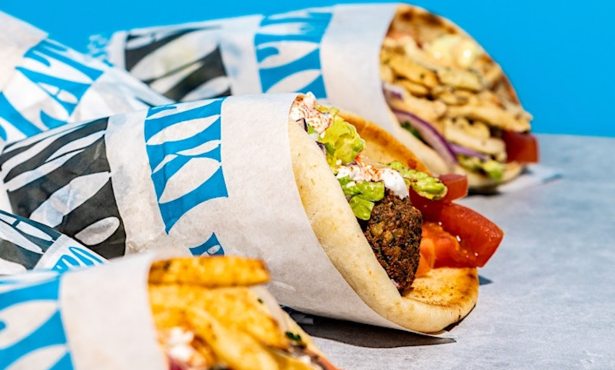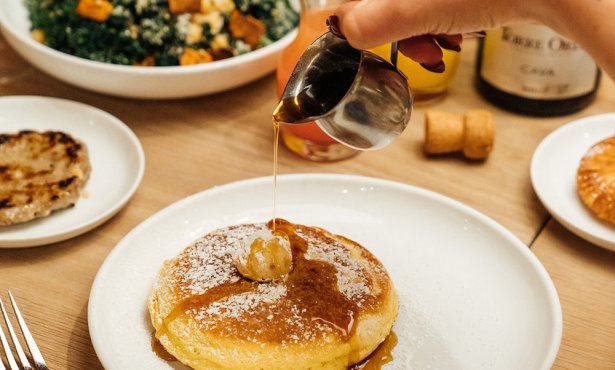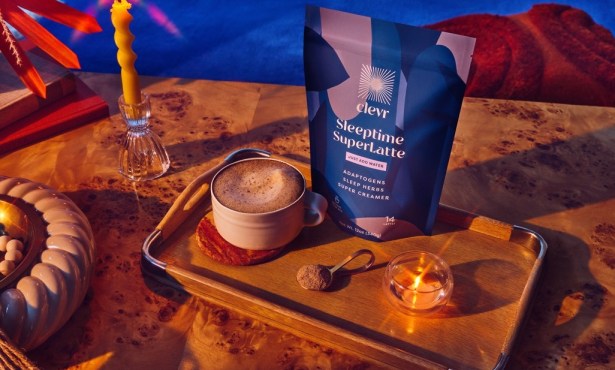Surf Meets Turf at Star Lane-Dierberg
Sushi, Wine, and Terroir Come Together in Pairing Feast

Pairing “surf and turf” sounds simple enough, but what about when that surf is sushi and that turf is terroir, the environment that makes a wine an S.B. county wine? Sushi and wine came together at Dierberg-Star Lane Vineyards early this May, when I and several others were lucky to try an exclusive lecture and lunch by Dierberg family winemaker Tyler Thomas and world-famous sushi chef Kiminari Togawa.
Together, the winemaker and chef explored themes of texture and freshness in the glass and on the plate based upon the environments that made them. Thomas and Togawa sought to challenge notions about long-standing traditions: whether it be the way the vineyard’s soil shapes the sensory experience on the palate, or how those resulting notes and nuances may pair with sushi, a culinary treasure that poses pairing puzzles in its delicacy and freshness.
Thomas is a winemaker with the mind of a philosophical botanist, coming to Dierberg and Star Lane vineyards with a background in wine physiology and a critical eye. Togawa, meanwhile, is so well-known in his native Japan for his oenological expertise that a character was based on him in The Drops of God, a popular manga largely credited for turning the Japanese populace onto the wines featured in its pages. Both men have come to be known as questioners, challenging long-held beliefs in their home countries and asking that we delve a little deeper — and dive we did that day.
The Trick with Terroir
Great wines, Thomas told us on a beautiful morning at Star Lane’s Drum Canyon, a vineyard west of Buellton, “are not made — they are discovered.” We had in front of us a flight of varietals: sauvignon blanc, chardonnay, and pinot noir, picked weeks apart in the rolling Sta. Rita Hills terrain. With these, he asked us to question a rather grid-like understanding of terroir. “My colleagues take for granted that their actions are consistent to producing terroir,” he said, adding that a somewhat standardized set of environmental factors like elevation, temperature inversions, and diurnal heat swings have come to be understood as unilaterally necessary conditions to produce this or that wine of this or that terroir. “It created the sense that if you don’t have that, then you’re making bad wine.”
When studying at UC Davis, Thomas worked with Mark Matthews, author of Terroir and Other Myths of Winegrowing, where the two countered and challenged one another on questions of what makes terroir terroir. “I’m a passionate believer in terroir,” Thomas said. “But I don’t think we as an American wine industry have thought hard enough about terroir. We need to go beyond the surface.”
Wineries sometimes see their soils in too simple terms, Thomas said. “It’s easy to think of it as one vineyard, one block,” he said, “but it’s not one vineyard.” Within a single vineyard — like at Dierberg on a shelf of Happy Canyon, for example — within one block you get subtle but meaningful dips in elevation and temperature (15-18 degree differences), and relative variations between the coastal fog that creeps in around noon.
Understanding terroir, Thomas told us, takes a sort of sensitivity to the plants as responders to larger environmental conditions rather than as agents of our own systematic control. “What are the vines asking us to make?” he asks. “What’s going in the vine? And how can we express what is unique about it and unique because of where they are grown, but with the representative trademarks of what great wines are?”
The wines before us were used to demonstrate where the winemaker came in. As composer, Thomas is more concerned with texture than flavor. “If you have a great site, those flavors are going to come,” he said. “I can’t control the flavor profile; we aren’t adding cherries or lemons. The largest share of influence outside of the vineyard is harvest time,” and its subsequent maturation in the barrel. To test terroir, Thomas and the Dierbergs used clones, some of unrooted and some of root stock, with various barrel agings and oaks to “discover the threads you see through your choices.” And yet terroir retains something of an elusive quality. “There’s a Star Lane–ness we see in the reds: coastal, sagey, a fresher quality that seems to be stamped on multiple varietals. But it’s not easy. Maybe Mark’s right that it’s a myth.”
Thomas’s approach is a philosophical one with a long-term view and is an attempt to understand the landscape in 250 years’ time. “We think outside the box, so we are making better wine in 40 years than we are now,” he said.
Edo and Enology
When it came to serving lunch, Chef Togawa was thinking very long-term — more than 300 years ago, when the Edomae or pre-Edo style of sushi he specializes in first came to be. At his Ginza Sushi Karaku in Tokyo, Togawa prepares sushi as it was made pre-refrigeration, with salt and vinegar serving as preservatives. With immersions and light curing, the aged sushi carries the perfect texture and umami flavors for wine pairings, a usually tough task because a slightly too-assertive wine may overpower the sushi’s subtlety, especially with red wine. That Monday, he and his cadre of cooks prepared a meal adjacent to the cavernous barrel rooms of Dierberg’s Happy Canyon estate to teach us that wine and sushi can, in fact, be married. Advanced sommeliers Matthew Dulle of SingleThread Farm in Healdsburg and Andrey Ivanov of Reeds American Table in St. Louis guided us in our tastings.

Tai (sea bream) with marinated kelp and yuzu paired in a beautiful match of brightness with a 2005 Star Lane Sauvignon Blanc, as the briney yuzu segued seamlessly into the citrusy calm of the sauvignon, with its notes of lime, guava, and chamomile — mellow acid meeting mellow acid. Following this was maybe the best pairing of the day: another presentation of tai pickled in sesame soy with a 2014 Dierberg Vineyard Chardonnay, with the nutty sesame melding warmly and lovingly with the baked apple and hazelnut layers of that creamy white wine. Pairings like these showed that sushi could meet happily with wine and that the minerality of mirin and savory of soy sits more than well with whites.
But the red wines, too, proved just as partnering. The smoldering metallic fire of pickled red maguro (red tuna) in soy seemed almost identical to the spicy clove notes of a 2014 Dierberg Pinot Noir. A very fragrant 2011 Star Lane “Astral” Cabernet from Happy Canyon, meanwhile, played a contrast to the mirin-marinated conger eel, with the Happy Canyon cassis and boysenberry notes sweetly offsetting the salt of the sea, and its characteristically gravelly earth tones tempering the mirin’s high notes. Here we saw the philosophy of terroir at work, with the characteristic tannins of Happy Canyon turf serving to contrast and, in another pairing, to match, as with a broiled toro and its rich partner, a 2013 Star Lane Cabernet from Happy Canyon.
The meal, like Thomas’s presentation earlier, suggested that we can and should rethink longstanding traditions in the worlds of food and wine. Not only can you pair sushi with wine, but you can also do it extraordinarily, where these tastes of the land seemed to have been meant to meet the tastes of the sea. “If no one says it, no one can envision it,” Thomas had said earlier of developing multi-century plans for his vineyard. As shown on the plate and in the glass, a little bit of questioning and trying new things can open up palates and minds in whole new ways.



